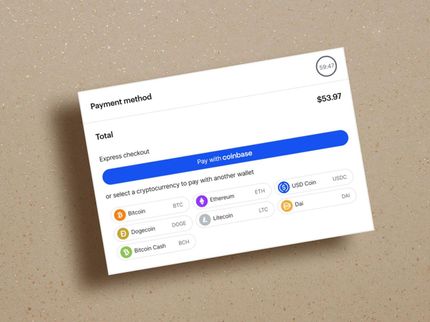Protein turnaround: standardized measurement required in the food trade
ProVeg and partners push for industry-wide standards for plant and animal proteins
Advertisement
More and more food retailers want to take responsibility for the nutritional turnaround. In order to be able to show concrete results, retailers need tangible figures - figures such as those provided by measuring the protein ratio in sales volumes. Who benefits from measuring the ratio of plant to animal proteins? The nutritional organization ProVeg, together with the industry association BALPro and the Albert Schweitzer Stiftung für unsere Mitwelt, provides answers in a position paper and advocates an industry solution.
Who benefits from the measurement?
Supported by non-governmental organizations, the food retail sector is currently driving forward the measurement of the protein ratio. In the Netherlands, seven retail chains are already analyzing the food they sell, including Albert Heijn, Aldi and Lidl.1 In the UK, Tesco and Sainsbury's measure their protein ratio.2 In Austria, Belgium and Germany, Lidl measures the ratio of plant to animal proteins in its sales volume.3 4 5
Dirk Liebenberg, Senior Project Manager Corporate & Institutional Engagement at the nutrition organization ProVeg, knows how retailers benefit from this: "Retailers know their sales figures. They can back up their sustainability targets and their reporting with concrete key figures on the protein ratio of the food they sell. On this basis, retailers can design more sustainable sales strategies in a targeted manner."
And the possibilities don't end there: Measuring the protein ratio would also be possible in a similar way in the out-of-home market, explains Liebenberg. The government could also benefit from anchoring the protein ratio in consumption as an index in the national nutrition strategy. "Imagine if the Federal Ministry of Food and Agriculture's nutrition report were to publish the national protein ratio every year." Liebenberg would see this as a substantial strengthening of public nutrition communication.
The Netherlands has already declared a national target for consumption. However, retailers in our neighboring country are more ambitious than politicians: the Dutch Ministry of Agriculture and Health wants to achieve a ratio of 50 percent plant protein to 50 percent animal protein in national consumption by 2030.6 Food retailers there are now aiming for a ratio of 60:40.7
Which method is recommended?
ProVeg recommends taking all foods into account when measuring the protein ratio instead of just the particularly protein-rich categories such as meat and dairy products and their plant-based alternatives. This is because cross-category measurement ensures that the results are comparable - from year to year and between retailers with different product ranges. In this way, those responsible for all product groups can contribute to the protein turnaround.
This measurement method is known as the protein tracker method. ProVeg Netherlands and the Dutch Green Protein Alliance have developed it for the food retail sector.8 Weighted according to their respective protein content, it includes all foods, including fruit, vegetables and cereal products such as bread and pasta.
Regardless of the measurement method, a standardized industry solution offers decisive advantages: "If the protein ratio is measured using the same method, the results can be compared directly," explains Freya Hiemstra, Corporate Engagement Officer at ProVeg Netherlands. "This also works across countries: retailers in Germany, for example, could compare their progress with that in the Netherlands."
Another advantage of an industry solution is the exchange of best practices: One retailer could learn from another which measures demonstrably improve the protein ratio. Competition between retailers can also benefit the retail sector. "Retailers tend to set more ambitious targets when they can compare themselves," says Esther Rabofski, Deputy Head of Food Progress at the Albert Schweitzer Foundation. "In our experience, retailers implement particularly effective measures when they report on their progress. This means that regular and comparable surveys of the protein ratio need to be published."
A roadmap for a successful protein transition
Based on the Planetary Health Diet, ProVeg has calculated a target ratio of 60 percent plant-based to 40 percent animal-based protein.9 Some of the largest retailers in Germany now base their nutritional strategies on the dietary recommendations of the international EAT-Lancet Commission.10 11 12 "Plant-based alternatives can make a decisive contribution to reversing the imbalance in the protein ratio. They are good for the climate, good for the animals, good for health and therefore above all good for the economy, trade and agriculture," says Godo Röben, expert for meat alternatives at the industry association BALPro. "With these products, Germany has the chance to become one of the most innovative agricultural locations in the world."
Every person in Germany eats an average of 51.6 kilograms of meat a year.13 That is 9.4 kilograms less than five years ago, but clearly still too much in terms of our health, our environment and the climate. This is also confirmed by the German Nutrition Society (DGE), which recently lowered its dietary recommendations.14
Diet is responsible for around a third of global greenhouse gas emissions.15 16 17 More than half of diet-related emissions are caused by the production of animal-based foods.18 Meat and dairy products have one of the greatest impacts on the climate.19 20 21 This makes diet a powerful lever in the fight against the climate crisis.22
And nutrition is indeed changing in this country: 46 percent of the population now eat a flexitarian diet and are actively reducing their consumption of animal-based foods, not including vegetarians and vegans.23 The call for more plant-based foods is therefore also being heard in the retail sector.
Sources
1 Questionmark Foundation (2024): Superlist Green 2023 - Which supermarkets make sustainable food the easy choice?, Netherlands, 2nd edition, published in January 2024. Online at: https://www.thequestionmark.org/download/superlist-report-nl-green-2023-v1.1.en.pdf
2 WWF (2022): What's in store for the planet: the impact of the UK shopping basket on climate and nature - 2022, published in November 2022. Online at: https://www.wwf.org.uk/sites/default/files/2022-11/WWF-Whats-in-Store-for-our-Planet-the-Impact-of-UK%20Shopping-Baskets-on-Climate-and-Nature-2022-v1.pdf
3 Lidl: Protein strategy, retrieved on 09.07.2024. Online at: https://unternehmen.lidl.de/verantwortung/gut-fuer-die-menschen/gesundheit-foerdern/handlungsfelder/bewusste-ernaehrung/proteinstrategie
4 Lidl (2023): For the product range of tomorrow: Lidl Austria publishes proportion of animal protein sources in its product range for the first time, published on 11.10.2023. Online at: https://corporate.lidl.at/media-center/pressreleases/2023/20231011_proteinshift
5 Lidl Belgium: Lidl België implementeert ambitieuze proteïnestrategie en verlaagt permanent de prijzen van plantaardige producten, retrieved on 09.07.2024. Online at: https://lidl.prezly.com/lidl-belgie-implementeert-ambitieuze-proteinestrategie-en-verlaagt-permanent-de-prijzen-van-plantaardige-producten
6 Nutrition insight (2023): Health Council urges Dutch government to push 60:40 plant-to-animal-based ratio diet, published on 15.12.2023. Online at: https://www.nutritioninsight.com/news/health-council-urges-dutch-government-to-push-6040-plant-to-animal-based-ratio-diet.html
7 ProVeg Netherlands (2024): Supermarkten publiceren eerste gezamenlijke meting om de eiwittransitie in kaart te brengen, published on 28.03.2024. Online at: https://proveg.com/nl/blog/supermarkten-publiceren-eerste-meting-eiwittransitie-eiweet/
8 Green Protein Alliance & Proveg Netherlands (2023): The Protein Tracker, published in September 2023. Online at: https://greenproteinalliance.nl/wp-content/uploads/2023/11/The-Protein-Tracker-2023-Green-Protein-Alliance-Proveg-20231102.pdf
9 See EAT-Lancet Commission (2019): Healthy Diets From Sustainable Food Systems, Summary Report of the EAT-Lancet Commission. Online at: https://eatforum.org/content/uploads/2019/07/EAT-Lancet_Commission_Summary_Report.pdf
10 Aldi Süd (2023): Aldi Süd Ernährungsreport #Ernährungswechsel, Status: March 2023. online at: https://s7g10.scene7.com/is/content/aldi/230525_AS_Ernaehrungsreport_V12.pdf
11 Edeka (2024): Planetary Health Diet: Enjoyably changing the world with EDEKA, press release from 25.01.2024. Online at: https://verbund.edeka/presse/pressemeldungen/planetary-health-diet-mit-edeka-genussvoll-die-welt-ver%C3%A4ndern.html
12 Lidl (2023): Lidl promotes sustainable and healthy nutrition, press release from 10.01.2023. Online at: https://unternehmen.lidl.de/pressreleases/2023/230110_bewusste-ernaehrung
13 Federal Office for Agriculture and Food (2024): Per capita consumption of meat falls below 52 kilograms, published on 04.04.2024. Online at: https://www.ble.de/SharedDocs/Pressemitteilungen/DE/2024/240404_Fleischbilanz.html
14 German Nutrition Society (2024): Gut essen und trinken - DGE presents new food-related dietary recommendations for Germany, published on 05.03.2024. Online at: https://www.dge.de/presse/meldungen/2024/gut-essen-und-trinken-dge-stellt-neue-lebensmittelbezogene-ernaehrungsempfehlungen-fuer-deutschland-vor/
15 IPCC (2022): Climate Change 2022: Impacts, Adaptation, and Vulnerability, Contribution of Working Group II to the Sixth Assessment Report of the Intergovernmental Panel on Climate Change, Cambridge University Press, Cambridge, UK & New York, NY, USA. Doi: 10.1017/9781009325844
16 Crippa, M. et al. (2021): Global anthropogenic emissions in urban areas: patterns, trends, and challenges, Environmental Research Letters 16(7), IOP Publishing, 074033. doi: 10.1088/1748-9326/ac00e2
17 Xu, X. et al. (2021): Global greenhouse gas emissions from animal-based foods are twice those of plant-based foods, Nature Food 2, 724-732. doi: 10.1038/s43016-021-00358-x
18 Xu, X. et al. (2021): Global greenhouse gas emissions from animal-based foods are twice those of plant-based foods, Nature Food 2, 724-732. doi: 10.1038/s43016-021-00358-x
19 Reinhard, G., S. Gärtner & T. Wagner (2020): Ecological Footprints of Food and Dishes in Germany, Institute for Energy and Environmental Research Heidelberg (ifeu), Heidelberg. Online at: https://www.ifeu.de/fileadmin/uploads/Reinhardt-Gaertner-Wagner-2020-Oekologische-Fu%C3%9Fabdruecke-von-Lebensmitteln-und-Gerichten-in-Deutschland-ifeu-2020.pdf
20 Xu, X. et al. (2021): Global greenhouse gas emissions from animal-based foods are twice those of plant-based foods, Nature Food 2, 724-732. doi: 10.1038/s43016-021-00358-x
21 Poore, J. & T. Nemecek (2018): Reducing food's environmental impacts through producers and consumers. Science 360(6392), 987-992. doi: 10.1126/science.aaq0216
22 EAT-Lancet Commission (2019): Healthy Diets From Sustainable Food Systems, Summary Report of the EAT-Lancet Commission. Online at: https://eatforum.org/content/uploads/2019/07/EAT-Lancet_Commission_Summary_Report.pdf
23 Federal Ministry of Food and Agriculture (2023): Germany as it eats: The BMEL Nutrition Report 2023, published on 13.10.2023. Online at: https://www.bmel.de/SharedDocs/Downloads/DE/Broschueren/ernaehrungsreport-2023.html
Note: This article has been translated using a computer system without human intervention. LUMITOS offers these automatic translations to present a wider range of current news. Since this article has been translated with automatic translation, it is possible that it contains errors in vocabulary, syntax or grammar. The original article in German can be found here.



































































